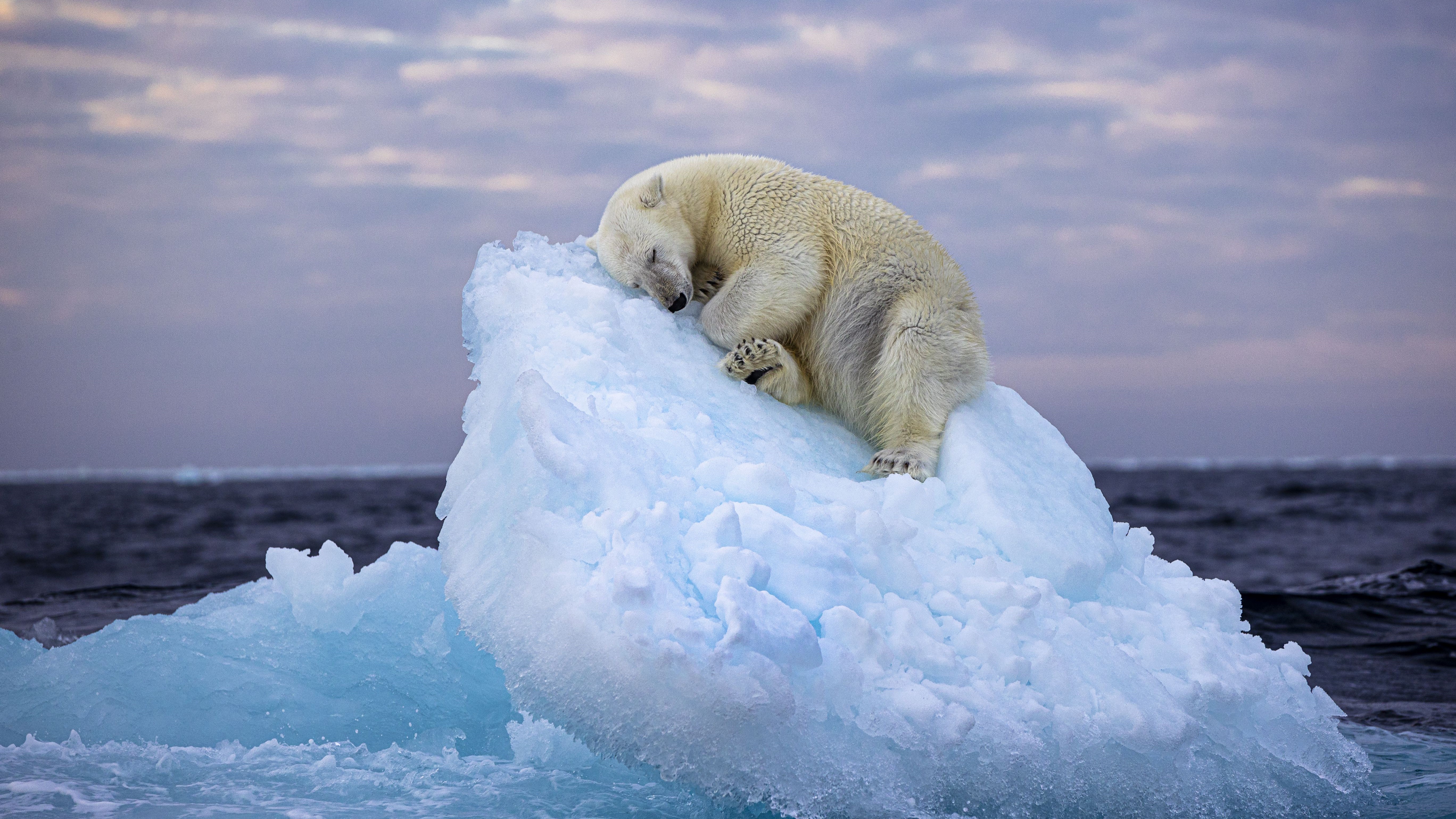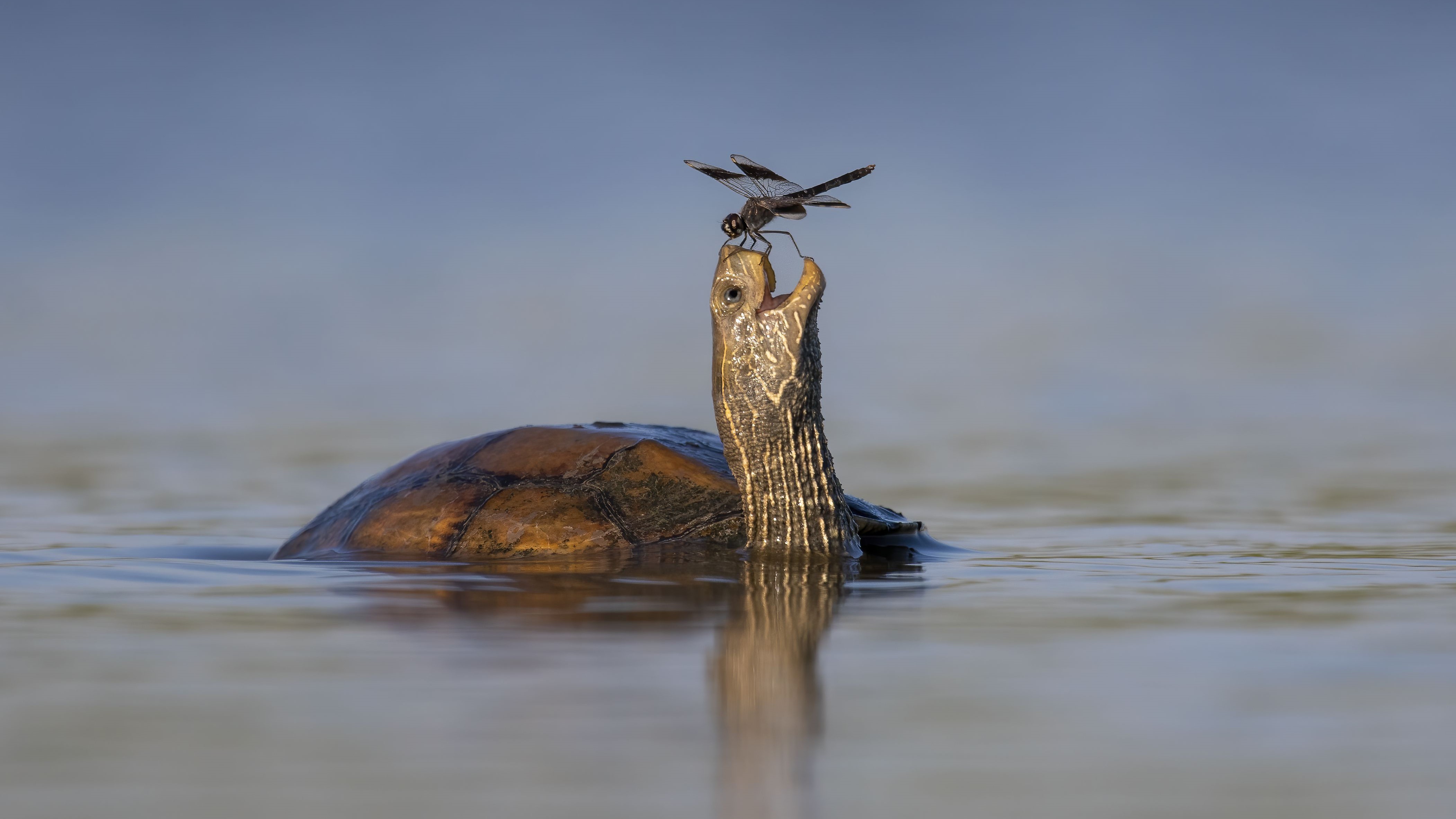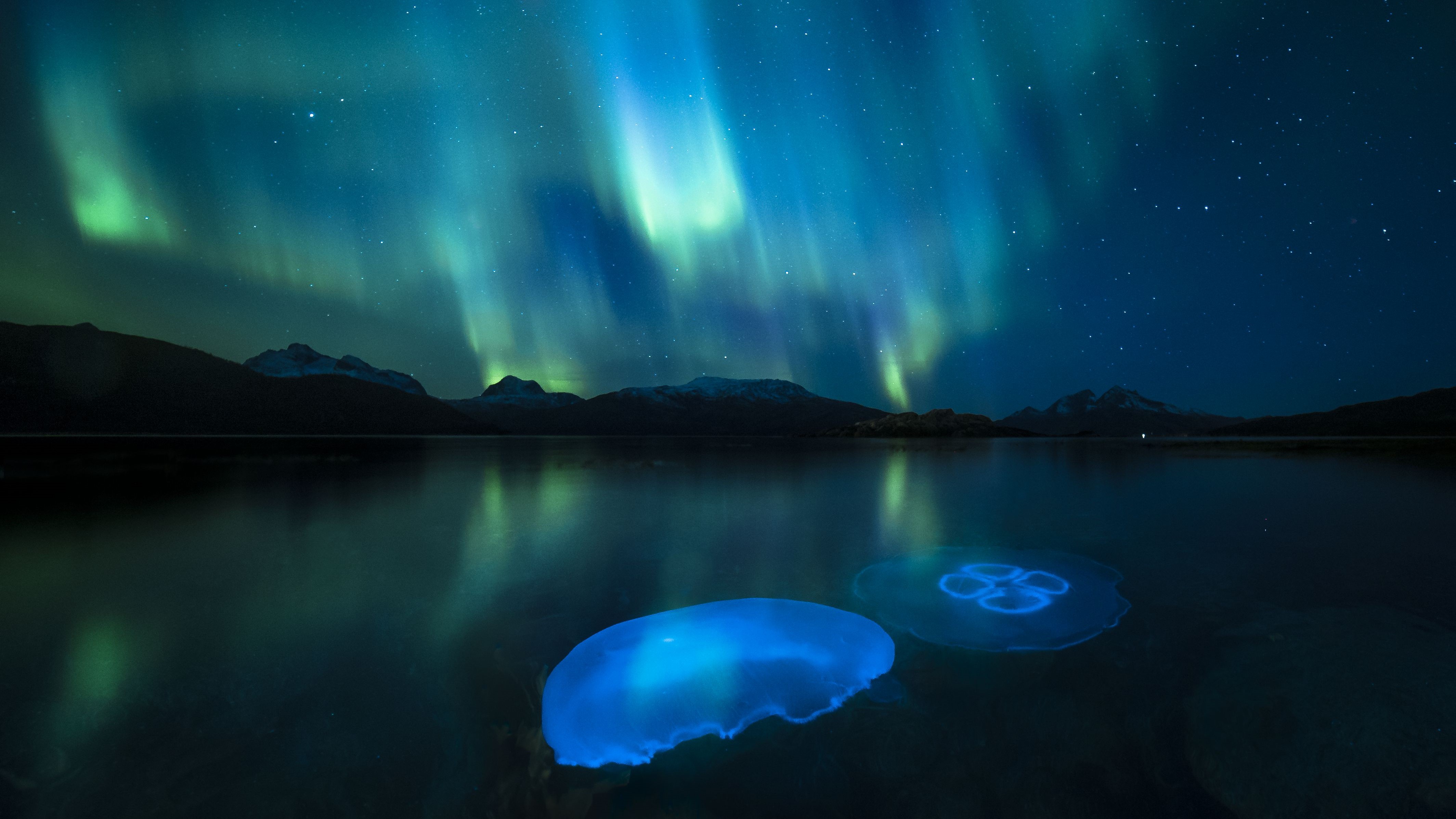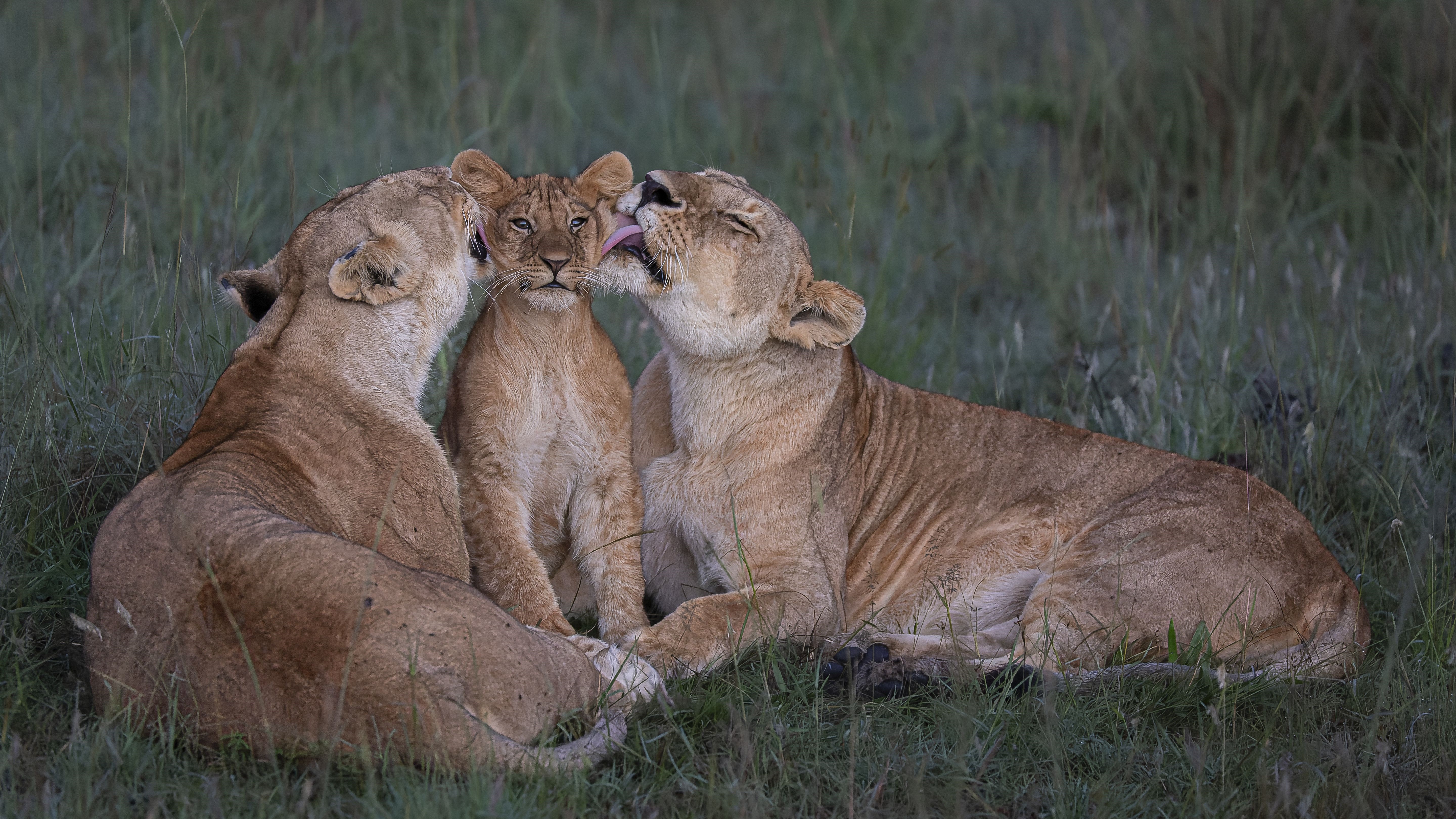Polar bear sleeping on tiny iceberg drifting in Arctic sea captured in heartbreaking photo
An image captured off the Norwegian archipelago of Svalbard shows a young polar bear drifting to sleep on a small iceberg after carving a bed in the ice.

A heart-wrenching image captures a young polar bear napping on the melting scraps of a tiny, drifting iceberg.
British amateur photographer Nima Sarikhani captured the scene off the Norwegian archipelago of Svalbard, which sits deep inside the Arctic Circle, around 500 miles (800 kilometers) from the North Pole. The image was crowned the winner of this year's Wildlife Photographer of the Year People's Choice Award.
After three days of desperately searching for polar bears (Ursus maritimus) through thick fog, the expedition vessel that Sarikhani was on changed course and sailed southeast toward some sea ice. There, the crew spotted two polar bears — a younger and an older male. Just before midnight, as the ship hovered close to the bears, the younger one climbed onto a small iceberg and carved out a bed with his paws before drifting off to sleep.
"This photograph has stirred strong emotions in many of those who have seen it," Sarikhani said in a statement shared with Live Science.
Members of the public voted "Ice Bed" as the competition winner from a shortlist of 25 images curated by a panel of judges and the Natural History Museum in London.
"Nima's heartbreaking and poignant image allows us to see the beauty and fragility of our planet," Douglas Gurr, director of the Natural History Museum, said in the statement. "His thought-provoking image is a stark reminder of the integral bond between an animal and its habitat and serves as a visual representation of the detrimental impacts of climate warming and habitat loss."
Get the world’s most fascinating discoveries delivered straight to your inbox.
Climate change is considered the biggest threat to the survival of polar bears in the wild, as rising temperatures melt away the sea ice these animals depend on. An estimated 26,000 polar bears remain in the wild, according to the International Union for Conservation of Nature Red List of Threatened Species, and they are considered vulnerable to extinction.
"Whilst climate change is the biggest challenge we face, I hope that this photograph also inspires hope," Sarikhani said. "There is still time to fix the mess we have caused."
The winning photograph will be displayed alongside four other "highly commended" images both online and in the Wildlife Photographer of the Year exhibition at the Natural History Museum until June 30. The shortlisted photographs can be seen below.
Wildlife Photographer of the Year is developed and produced by the Natural History Museum, London.

Sascha is a U.K.-based staff writer at Live Science. She holds a bachelor’s degree in biology from the University of Southampton in England and a master’s degree in science communication from Imperial College London. Her work has appeared in The Guardian and the health website Zoe. Besides writing, she enjoys playing tennis, bread-making and browsing second-hand shops for hidden gems.






